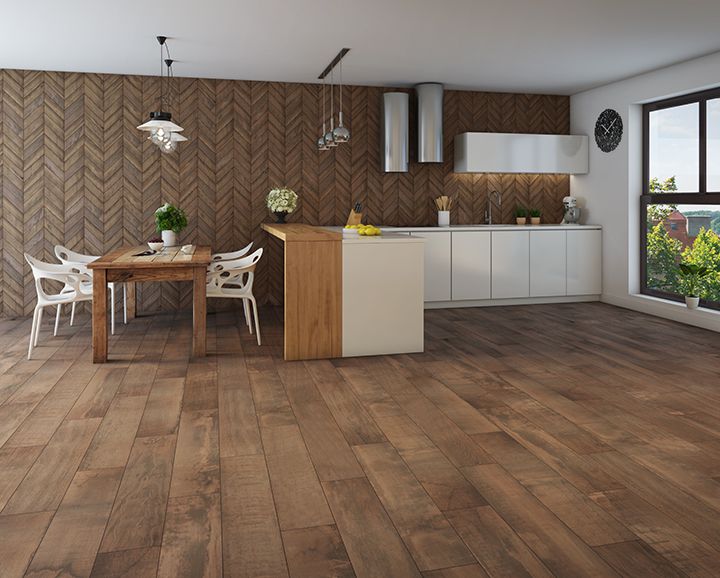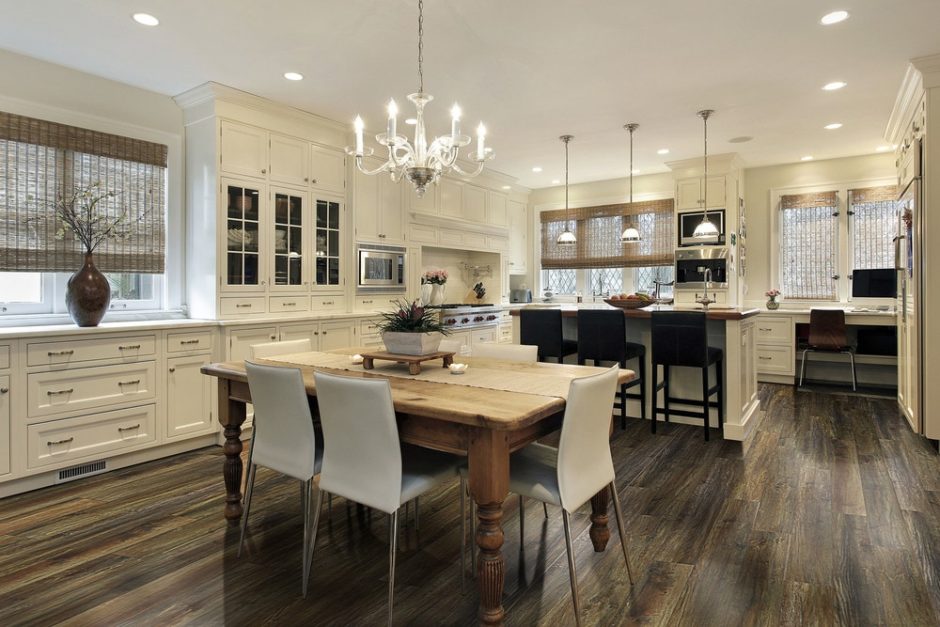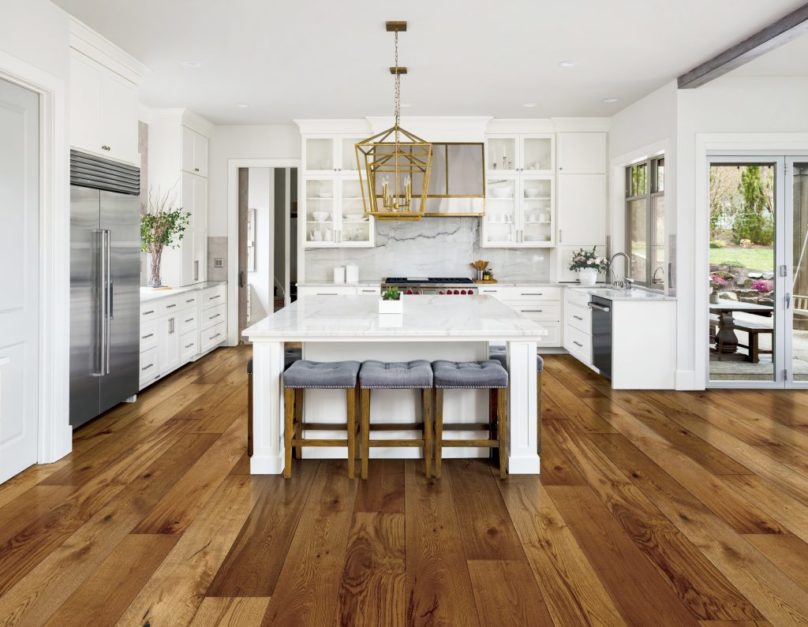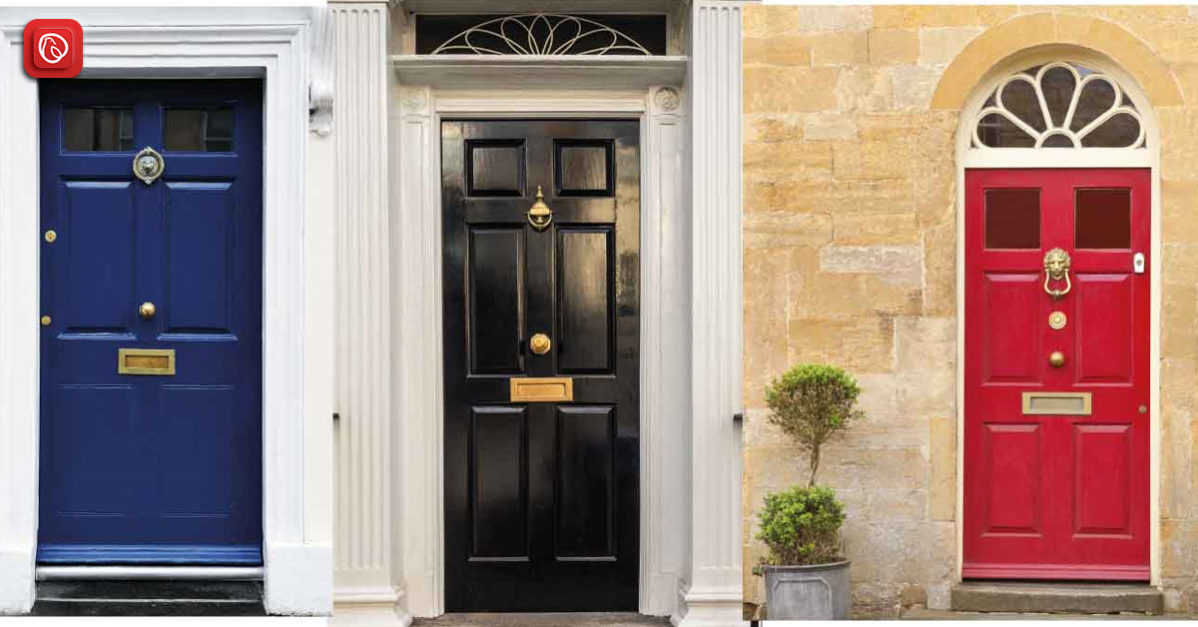Installing wooden flooring in kitchens is a popular choice among homeowners due to its aesthetic appeal, durability, and cost-effectiveness. The natural warmth and beauty of the wood especially can create an inviting ambience in the area.
Graana.com outlines the different advantages and disadvantages of wooden flooring in kitchens, the different types available, and the process of choosing the right wooden flooring.
Is Wooden Flooring Suitable for Kitchens?
Homeowners often question the suitability of wood for kitchen flooring due to its vulnerability to heat and moisture, which can result in warping, swelling, and shrinkage. Given the nature of activities that occur in a kitchen, wood flooring is more susceptible to changes in temperature and humidity compared to living rooms or bedrooms. However, there are different types of wooden flooring that can be suitable for this space.
Types of Wooden Flooring in Kitchens

There are three main types of wood flooring for kitchens: engineered wood, solid wood, and reclaimed plank wood.
Engineered Wood Flooring
Engineered wood is a popular option for kitchens due to its durability, moisture resistance, and versatility. It is made by bonding a thin layer of hardwood to a base of plywood, creating a stable and strong flooring option. It is also less prone to expanding and contracting than solid wood, making it less susceptible to water damage.
Solid Wood Flooring
Solid wood flooring is made from a single piece of hardwood, making it more durable than engineered wood. However, it is more susceptible to water damage and is less versatile than engineered wood. This flooring option is also more expensive in comparison.
Reclaimed Wood Planks
The trend of utilising reclaimed hardwood planks, obtained from deconstructed factories, office buildings, and bowling alleys, is rapidly gaining popularity in the construction industry. This option is particularly attractive to those who prioritise sustainable building practices, as it involves the use of recycled materials.
Alternatives to Wooden Flooring in Kitchen
In the event that a wooden floor is not suitable for your kitchen based on factors such as budget, household requirements, or location, there are numerous alternatives available that can still deliver a similar aesthetic appeal.
Laminate Wood Flooring

Laminate wood flooring is an affordable alternative to hardwood, and is made of synthetic materials designed to mimic the look and feel of wood. It is durable, moisture-resistant, and easy to clean, making it an excellent option for homeowners looking for an affordable, low-maintenance wood flooring option.
However, laminate wood flooring may not provide the same warmth and authenticity as natural wood, nor have the same lifespan as hardwood or engineered wood.
Luxury Vinyl Flooring
Luxury vinyl flooring for kitchens can now mimic the authentic look of wood, complete with realistic wood textures. In addition to its aesthetic appeal, luxury vinyl is also incredibly easy to clean and maintain.
Tile
It’s worth considering tile flooring as an alternative to wood for your kitchen flooring. Ceramic tile and porcelain, in particular, can be designed to resemble wood, plus they are easy to maintain.
Advantages of Wooden Flooring in Kitchens
One of the main advantages of wooden flooring in kitchens is its aesthetic appeal. It can create a warm and inviting ambience, and it is available in various styles and finishes, allowing homeowners to choose the perfect option that matches their personal taste and décor. Additionally, wooden flooring is durable and can withstand heavy foot traffic without showing any visible wear and tear.
Wooden flooring is also comfortable underfoot, which is particularly beneficial in a kitchen where homeowners often stand for extended periods. The insulation properties of wood also make it comfortable during colder months, as it retains heat longer than other types of flooring.
Another advantage of wooden flooring in kitchens is its cost-effectiveness. Although wood flooring can be more expensive than some other flooring options, it is often more affordable in the long term, as it has a longer lifespan than many other materials. It is also relatively easy to clean and maintain, which saves homeowners money on cleaning supplies and professional cleaning services.
Disadvantages of Wooden Flooring in Kitchens
The biggest disadvantage of wooden flooring in kitchens is that it is susceptible to water damage. Moisture and water can cause wood to warp, bend, or rot over time, making it essential for homeowners to clean up spills and splashes immediately. Moreover, water can cause damage to the subfloor, resulting in costly repairs.
Wooden flooring in kitchens also requires regular maintenance. For instance, it is essential to refinish wood floors every few years to maintain their appearance, and the flooring may require regular polishing or waxing to protect it from wear and tear.
Choosing the Right Wooden Flooring for Your Kitchen

When choosing the right wooden flooring for your kitchen, there are several factors to consider, including your budget, style preferences, durability, maintenance requirements, and moisture resistance.
It is essential to choose wooden flooring that can withstand high levels of moisture, such as engineered wood, and consider finishes that can protect the wood from spills and splashes. Additionally, it is important to choose a type of wood that can withstand heavy foot traffic in the kitchen, such as oak or maple, and avoid more delicate wood types such as cherry or pine.
It is also essential to choose wooden flooring that complements your kitchen’s style and décor. For example, if your kitchen has a more traditional look, you may want to choose wooden flooring with a distressed or hand-scraped finish, while a more modern kitchen may benefit from a sleek and simple wooden flooring finish.
Maintenance of Wooden Flooring in Kitchens
To ensure the longevity of wooden flooring in kitchens, it is essential to maintain it regularly. This includes cleaning up spills and splashes immediately to avoid water damage, sweeping or vacuuming the floor regularly to remove debris and dust, and using cleaning products that are compatible with wooden flooring.
It is also recommended to refinish wooden floors every few years to maintain their appearance and protect them from wear and tear. This involves sanding down the floor and applying a new layer of finish or stain to the wood.
Hardwood vs. Luxury Vinyl Flooring
Hardwood floors are often not recommended for kitchens due to their vulnerability to moisture and scratches. However, a practical alternative to hardwood flooring is luxury vinyl flooring (LVF), which is fully moisture-proof flooring and more resistant to wear.
Also referred to as vinyl plank flooring, LVF is manufactured in multi-layer planks that join edge-to-edge to form a floating floor resting on a foam underlayment pad. Advancements in manufacturing techniques have enabled luxury vinyl to replicate the look of various materials, including wood and stone, with remarkable realism.
Luxury vinyl is impervious to water and most stains, making it a practical flooring option for kitchens. Installation is easier and less expensive than most hardwood flooring. Therefore, unless a completely natural material is a priority, it is worthwhile to consider vinyl planks as an alternative to wood.
Conclusion
Wooden flooring in kitchens can add warmth, style, and durability to your space. While it has some disadvantages, such as its susceptibility to water damage and the need for regular maintenance, it is a cost-effective and long-lasting flooring option.
To know about other flooring options, visit Graana blog.




